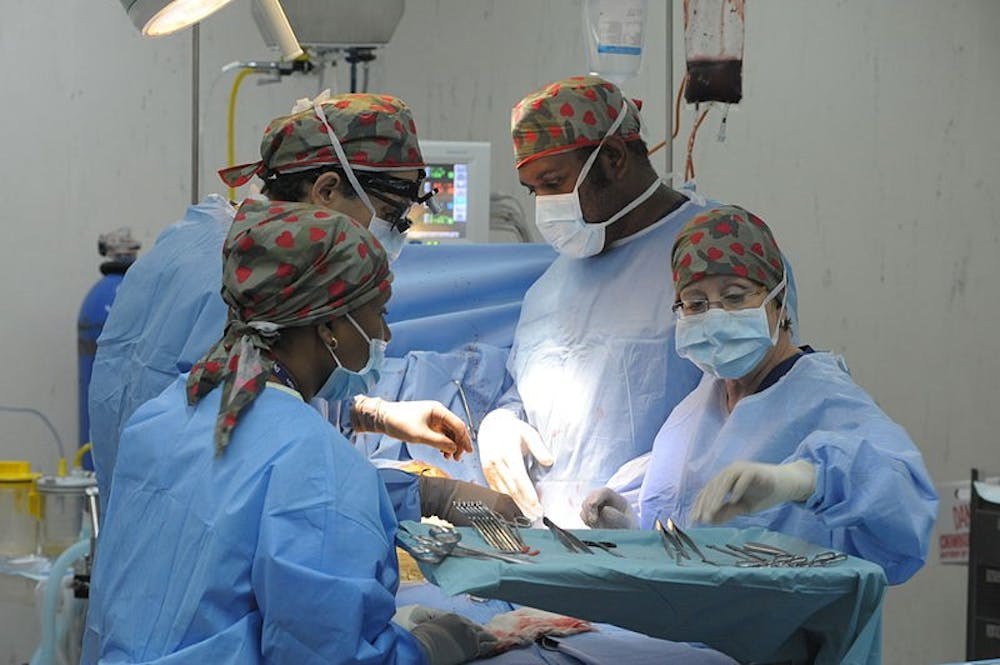It’s widely known that the heart is one of the most important organs in the human body. With its contracting and relaxing motions, the heart is able to pump blood to different areas within the body, thus providing nutrients and various necessary hormones to ensure the body operates at an optimal level.
However, all vital processes have the possibility of becoming defective in some way. For the heart, many different problems can arise due to either congenital disorders or simply the heart tiring out. Researchers at the Ohio State University Wexner Medical Center have discovered a way to alleviate the stress that occurs in the heart.
When blood first enters through the superior and inferior vena cava, it pools into the right atrium. When the right atrium contracts, the blood is pumped into the right ventricle. The right atrium then relaxes and the right ventricle contracts, pumping blood into the lungs via the pulmonary artery to get oxygenated.
This oxygenated blood then enters the left atrium and, through contraction, the left ventricle. When the left ventricle contracts, blood moves first through the aorta and then throughout the body via arteries.
In one condition, known as diastolic heart failure or heart failure with preserved ejection fraction (HFpEF), the ability of the heart to deliver blood properly to the body is impaired. This impairment causes a deficiency of oxygen-rich blood from reaching various parts of the body.
Diastolic heart failure is known as a left-sided heart failure because of its effect on the left ventricle. In patients with diastolic heart failure, the left ventricle’s ability to relax after contraction is compromised. This results in a stiff muscle and prevents the blood from entering the left chamber in the most optimal capacity.
Because the left ventricle is responsible for pumping enough blood to the rest of the body, the left ventricle of someone with HFpEF must work harder to pump the same amount of blood than someone without HFpEF.
In several incidences, diastolic heart failure can cause shortness of breath. This is largely due to the left ventricle not being able to relax completely after contraction.
The left ventricle is then not able to retain as much blood, causing some to flow backwards into the left atrium and then back into the lungs.
Researchers like Dr. Rami Kahwash, a cardioligist at the university’s Richard M. Ross Heart Hospital, discovered that by placeing a dime-sized catheter between the left and right atrial chambers they were able to relieve the pressure built up on the left side.
“It’s just like when you have a traffic jam. Instead of backing up all the way back to the lungs, we’re creating a detour that’s taking the blood around another route and relieving the pressure,” Kahwash said in a press release.
In this study, 44 diastolic heart failure patients were randomly selected to participate in the study. Half of the participants underwent a placebo treatment to act as the control and the other half received the interatrial shunt device. After a month, the pulmonary capillary wedge pressure (PCWP) values were taken and compared.
Kahwash and his co-researcher Dr. Scott Lilly, a cardiologist and director of the Ohio State University Structural Heart Disease Program, concluded that the shunt reduced PCWP readings by 3.5 mmHg.
“This interatrial shunt device may be an opportunity to improve quality of life and exercise capacity for patients that currently have few other options,” Lilly said in a press release.
The study has estimated that within the next five years, the number of diastolic heart failure cases will be responsible for more than half of all heart failure cases.
“Because it’s a growing public health problem finding a new treatment option for DHF is crucial,” Kahwash said.

















